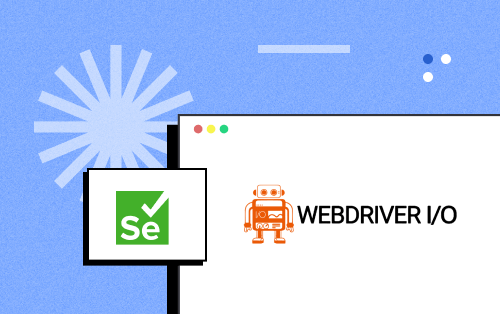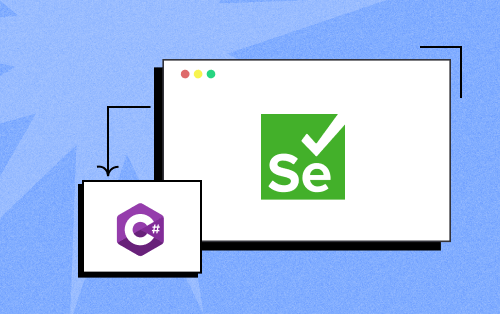- Testing Basics
- Home
- /
- Learning Hub
- /
- Test Approach Tutorial
- -
- June 16 2023
Guide To Test Approach: Different Types With Examples
This tutorial will walk you through everything you need to know about the test approach.
OVERVIEW
A test approach involves a clear grasp of the fundamental testing principles, objectives, and a clear test strategy. The starting point usually identifies the types of testing a project would require. This includes acceptance, integration, system, unit testing, and so on.
As we know, testing is one of the most critical aspects of the Software Development Life Cycle. It goes without saying, but the final software product has to meet set quality standards. So, to achieve this goal, it's vital to have a well-thought-out, defined, and fully-structured testing approach.
Every testing type serves a set purpose, and drives focus on unique aspects of the performance in the software's functionality. The clarity in the testing approach results in better stakeholder confidence in the entire testing process and a thorough evaluation of the software. As a result, a test approach contributes to identifying and addressing potential defects within a stipulated time frame.
What is a Test Approach?
A test approach is the implementation of the test strategy in a software project that defines how testers will carry out software testing, along with throwing light on strategy and execution to carry out different tasks. The testing approach also refers to the testing techniques, tools, strategies, and methodologies for testing any software product.
Testers can easily outline objectives, the scope of testing, and expected results through a testing approach. Some other parameters that come under the definition of test approach include test data requirements, test environment, and the roles and responsibilities of different team members in the testing team.
If you're looking to achieve comprehensive test coverage, a well-defined approach to testing is the key to having well-managed and structured testing for respective activities. Testing teams would be easily able to manage resources and ensure a better alignment of testing efforts with unique project requirements.
Importance of a Test Approach
Having a clear testing approach offers a better focus on specific performance and functionality aspects of the software. It mitigates or at least minimizes the risk of deadly defects and enhances the overall software quality. Having a testing approach in place outlines a clutter-free test strategy. In other words, the testing team has a straightforward plan to execute. The plan is full of useful information about risk management, adhering to timelines, and allocating resources.
Test approach also offers test execution guidelines, test automation, and test data management, which makes managing tests more efficient. As a result, testers better understand the depth and scope of testing. They can easily identify the required test data and suitable automation testing frameworks to automate repetitive tasks. All of this combined results in a higher quality of software and lesser time to market.
In a nutshell, a testing approach identifies the following:
- Objective and scope of testing.
- What will you test.
- How will you test.
- How much will you test.
Note : Cut down test execution by more than 10x. Try LambdaTest Now!
Key Components of a Test Approach
Although a test approach might sound like a one-size-fits-all term, it, in fact, comprises different key components. Each element has its own unique role to play. Even if the testing team misses out on one of them, it can mess up the entire test approach.
On that note, let's look at what components a test approach encompasses.
Test Objective
Test objectives report specific purposes and goals that constitute the primary driver of all testing efforts. They outline different software aspects for evaluation and the end goal of any testing process.
Such objectives comprise validating functionality for determining whether the software adheres to set requirements and ensuring the security layers are intact for identifying and addressing vulnerabilities. The test objective also provides that the software is user-friendly by evaluating usability and assessing performance to meet benchmarks.
Test Strategy
A test strategy refers to an organization-level document describing the testing approach, also known as what the testing team needs to achieve and how they can achieve it. Instead of outlining project-specific testing needs, this document presents some common testing principles for all projects.
This strategy acts as a vital framework that regulates testing by determining test design and providing transparent documentation that's product specific.
Explore our Analytical Test Strategy Guide. Understand its importance, roles, tools, defects management, metrics, automation, and more. Master analytical testing confidently.
Test Planning
Considering the neverending list of testing activities, it's always a good idea to create a comprehensive and detailed plan, also known as carrying out a test plan. It includes defining the objective and scope of testing, recognizing deliverables, estimating timelines and resources, and analyzing the test environment as well as requirements for test data.
This process also involves assigning priority to different activities, outlining employee roles, and identifying dependencies. All in all, a test plan is a road map that offers structure and guidance to conduct effective and efficient testing.
Test Design
Test design is the process involving creating test scripts and test cases based on defined test requirements and objectives. The team members systematically identify test conditions, specify expected outcomes, define input data, and determine test execution steps.
It also takes different factors such as test efficiency, risk prioritization, and functional coverage into consideration, simultaneously minimizing unnecessary or redundant test cases. Test design includes decision tables, boundary value analysis, and equivalence partitioning.
Test Data
Test data comprises pre-existing information, conditions, and input values testers use during the Software Testing Life Cycle to execute various scenarios and test cases. Professionals involved can easily validate the reliability, performance, and functionality of software under a wide array of circumstances. Test data comprises all kinds of scenarios, both positive and negative, for the sake of comprehensive test coverage.
When working with accurate test data, you can easily recognize potential defects, edge cases, and conditions that aren't apparent with ideal or standard data. That’s why it's crucial to ensure an accurate representation of real-world scenarios with test data and carefully manage it to maintain its confidentiality, integrity, and correctness.
Test Execution
When testers use test data to run those predefined test cases on the system in all designated environments, the process is test execution. It observes and records real results and compares them to expected outcomes by executing test scripts. Testers need to follow the exact sequence listed in the test plan document. This step requires a massive amount of attention to detail, accuracy, and adherence to necessary testing procedures to validate the compliance, performance, and functionality of a software product.
Test Coverage
Test coverage is the extent to which testers exercise the software system by predefined test cases. You can assess test coverage at a wide variety of levels, such as risk coverage, code coverage, functional coverage, and requirements coverage. Sometimes, no matter how hard you try, some areas are not adequately tested. But when test coverage is supposed to be comprehensive, the risk of uncovered issues decreases, and the reliability of a software system increases.
Test Environment
A test environment is a setup and infrastructure housing different testing activities, including all the software, hardware, and configurations required for effective test execution.
Ideally, the test environment should be as close to a replica of the production environment as possible. This will allow testers to validate it under real conditions and have a controlled and stable environment where testers can easily execute test cases without conflicts or unnecessary interference.
It also includes virtual machines, test servers, test databases, etc. The more a test environment is similar to the production environment, the higher the reliability and accuracy of test results.
Test Documentation
Test documentation houses various records and artifacts as part of the testing process to support and document various relevant activities. It includes test scripts, test cases, test plans, defect logs, and test reports. It also opens a gateway to effective stakeholder communication and serves as a crucial resource for future audits, reference, and for compliance. More up-to-date and well-maintained test documentation directly results in better accountability and transparency in testing.
Test Reporting and Analysis
Test reporting and analysis involves the collection, analysis, and presentation of outcomes of various testing activities, such as test coverage, defects, results of executed test cases, and extensive test reports. Stakeholders can use these reports and analyze data to gain valuable insights into how ready the software is to brim up to its full potential.
Analytics are the best insights to identify trends, patterns, and areas of improvement. You can also identify high-priority bottlenecks and risks that need quick addresses. This component also offers feedback to the software development team so that they can fix any problems if they arise quickly.
Preparing for the Test Approach
Since implementing a well-defined testing approach acts as a backbone of a Software Testing Life Cycle, the preparations have to be top-notch. But by thoroughly preparing for creating and implementing a testing approach, professionals lay out a robust foundation and increase the chances of their testing efforts. This leads to thorough software evaluation and results in a high-quality software product.
Here are the steps to prepare for your testing approach.
1. Gathering Requirements and Specifications
Gathering requirements and specifications for a software testing process is collaborative and systematic. It all starts with a thorough review of project documentation. Following that, the teams involved engage with stakeholders to understand user needs and stakeholder expectations.
Then comes understanding the intended software functionality by analyzing use cases and user stories and addressing gaps and ambiguities with the help of clarifications and feedback loops. The final step is to document these requirements and create a traceability matrix to enable sufficient test coverage and pave the path toward developing an effective test approach.
2. Identifying the Aim of Testing
Identifying and establishing an aim of testing provides a clear direction for various testing activities. It makes testing efforts purposeful and targeted while addressing key functionalities and areas that need validation.
The testing team can also easily identify the depth and scope of testing. Some other areas in which the aim of testing helps testers include shaping the test environment, molding test data, test prioritization, and risk based testing.
3. Establishing Testing Scope and Boundaries
It's important to establish the testing scope and boundaries to develop an effective and highly-focused testing approach. It defines the extent and restrictions of different testing activities, which ensures manageable and well-defined testing efforts.
Once you identify what you're including and excluding from the scope of testing, it's easier to prioritize tasks, appropriately allocate resources, and eliminate unnecessary processes. All in all, establishing testing scope and testing boundaries leads to comprehensive software validation within set boundaries.
4. Thorough Assessment of Resource Requirements
A thorough assessment of resource requirements is a must to enable effective planning, resource allocation, and test management. A pragmatic and fruitful test approach can only result from a clear understanding of the resources required, such as test tools, skills, number of testers, test environments, etc.
Such assessments help identify any constraints or resource gaps upfront, making room for proactive redressal measures. It also allows testers to create appropriate timelines and realistic schedules, which further contributes to executing a productive testing approach and optimizing available resources.
Techniques of Test Approach
Creating a testing approach is usually a combination of proven techniques that arise from various practices, strategies, and methodologies during successful test cycles. Every technique offers users a distinct approach to assessing system performance, verifying functionality, and uncovering different types of defects.
Based on testing goals and project requirements, your team can use one or a combination of the below-mentioned techniques. Let's take a look.
1. Proactive Test Approach
While following a proactive testing approach, testers design tests in the earlier phases of the testing cycle to identify and fix defects. It emphasizes the continuous involvement of the team from the starting phases of the Software Development Life Cycle to recognize and fix potential bottlenecks and possible risks. It follows the concept that prevention is better than cure instead of solely detecting and resolving issues.
Testers collaborate with developers, business analysts, and stakeholders from an initial stage and provide valuable insights into development. Some of the activities they contribute to include risk identification, design discussions, and requirements gathering.
Proactive testing also places a huge emphasis on assessing and managing risks and thoroughly testing critical areas and functionalities prone to defects. A proactive testing approach also involves developing test cases before implementing the actual code and facilitating continuous collaboration in feedback.
2. Reactive Test Approach
A reactive testing approach involves test design that comes after developing the software. Teams usually focus on identifying and taking care of defects after they are apparent or have already occurred. This approach usually comes into the picture when the involvement of testers during early software development stages is limited. Primary testing activities occur after the development phase is over, as testers receive either partially or fully completed software for functionality validation.
The process includes creating test cases based on acceptance criteria and documented requirements the stakeholders offer. It also involves retesting functionality that the testers have previously validated in case someone changes the software. After all, no matter how careful professionals are, sometimes, fixes or changes in the software can give rise to new regressions and defects in the system.
Implementing a reactive testing approach often occurs when there are constraints on resources and time. However, it can lead to increased maintenance costs since testers detect defects at a later stage in the Software Development Life Cycle. However, you can easily overcome this challenge by giving enough attention to seamless collaboration between developers and testers and emphasizing defect resolution.
Different Test Approaches
As discussed earlier, having a testing approach helps identify the objective and scope of testing, what you need to consider for testing, how to go about the testing process, and how much you should be testing.

But there are different test approaches depending on various business requirements, and that isn't a one-size-fits-all approach.
Primarily, there are seven core types of testing approaches.
Analytical Test Approach
An analytical test approach refers to a risk based testing strategy that focuses the majority of testing efforts on high-priority critical functionalities. It's a data-driven and systematic methodology that involves leveraging proven analytical tools and techniques to optimize testing by extracting important insights through test data.
The process starts with a detailed analysis of test data that identifies trends, patents, and anomalies. Testers gain valuable insights into system behavior by using visualization, data mining, and statistical analysis.
After the analysis, testers can easily identify extensively tested areas and those that need additional focus. This technique enables effective resource allocation and ensures adequate coverage of potential risks and critical functionalities.
This approach also employs predictive analytics that includes anticipating potential defects and following a proactive approach to preventing them in the first place. Testers can access test execution results, defect logs, and other historical data to identify indicators and patterns associated with commonly occurring defects. The analytical testing approach also fosters a culture of consistent improvements, thanks to its iterative nature.
Model-Based Test Approach
A model-based testing approach involves creating models for representing the requirements, structure, and behavior of a software system. The models are a foundation to manage, execute, and design testing activities. These models are also an accurate representation of the software system under test. They include data models, behavioral models, functional models, and so on. It's easy for testers to capture the key dependencies and aspects of a software system, thereby offering a comprehensive view of its structure and behavior.
Models also serve as the foundation to generate test cases by helping testers derive inputs, expected outputs, and test scenarios. In fact, models automatically create test cases using techniques like model transformation, model coverage analysis, or model-based testing. As a result, these systematically derived test cases offer comprehensive coverage of various system functionalities.
As the system evolves, models require updates before reflecting changes. This means that testers have to maintain these models to ensure relevance and high accuracy consistently. Testers can also trace test cases back to set requirements and determine how any modifications impact the models.
Methodical Testing Approaches
A methodical testing approach is a combination of structured and systematic methodologies that enable the testing process to conduct a comprehensive software system validation. Testers can follow predefined guidelines and prioritize and plan their testing activities accordingly.
Primarily, there are two types of methodical testing approaches- failure-based and experience based. Let's take a look.
- Failure-Based Test Approach
- Experience-Based Test Approach
- Checklist and Quality Characteristic-Based Test Approach
The failure-based testing approach emphasizes test design and execution based on defects and failures known to testers. It is also known as defect-based testing. This method leverages defect reports, previous patterns, and historical data to recognize possible vulnerable areas in a software system.
Testers also conduct an in-depth analysis of the root causes of past defects to grasp commonly occurring patterns of failure and prioritize their efforts. Since a failure-based testing approach specifically targets well-known points of failure, this approach is effective in uncovering and addressing similar problems in the present and future systems.
Implementing the failure-based testing approach starts with a thorough review of bug-tracking systems, customer feedback, and current defect logs to identify critical and recurring defects. After analyzing the root cause, testers design scenarios and test cases for specific targeting of failure points. After reproducing and validating failures, they take appropriate measures to address them.
An experience-based testing approach depends on the domain, knowledge, and past experiences of the testing team and their understanding of the system. The team employs a wide array of heuristics, domain-specific data, and testing techniques to anticipate any possible pitfalls, user interactions, or edge cases that might lead to failures.
Apart from helping the Software Development Life Cycle, an experience-based testing approach makes the entire team realize the importance of knowledge, sharing, and collaboration among themselves.
A human-centric approach and perspective are the key to making a testing life cycle succeed with the help of an experience-based test approach. After all, predefined test cases on their own have their limits and might not capture every single issue without actual professional experience.
In a checklist-based test approach, testers create and use a predefined list of tasks, criteria, or items to perform, verify, and review during the testing process. They also serve as a reminder and reference to ensure that the testers have considered and addressed all the important aspects.
Testers also need to take best practices, guidelines, standards, and project requirements into account before creating these checklists. These lists include security measures, performance metrics, usability factors, functional requirements, and so on.
Systematically, testers can keep referring to these and take items off as they complete them. This approach offers a great deal of structure and clarity to testers and ensures that they don't end up overlooking any critical aspects.
A quality characteristic-based test approach works the same way. Basically, it tests the software system based on predefined attributes that make a high-quality software product. These non-functional requirements define a software system’s desired qualities beyond just its basic functionality. Some examples include compatibility, maintainability, security, performance, reliability, usability, and so on.
Process or Standard-Compliant Testing Approach
A process or standard-compliant testing approach adheres to pre-defined frameworks, standards, and processes to facilitate compliant and consistent testing practices.
Some of the processes in this approach include ensuring alignment between industry standards and testing activities and meeting set quality criteria. Testers usually conduct testing in a controlled and structured manner which ensures the auditability, reproducibility, and traceability of various activities. This approach enables consistent and efficient testing compliant with established norms.
Dynamic and Heuristic Approaches
While following the dynamic approach, software execution is about observing and evaluating its performance and behavior. The primary focus is on validating the non-functional and functional aspects of software through the active execution of test cases.
It involves inputting different values as a method of assessing responses. Dynamic testing also encompasses techniques like acceptance testing, system testing, integration testing, and unit testing. The core aim here is to uncover errors, defects, and software vulnerabilities and make room for iterative improvements along with some real-time feedback.
A heuristic testing approach comes under the category of exploratory testing and highly depends on the intuition, experiences, and knowledge of testers. In other words, we can also refer to heuristic techniques as rules of thumb that experienced testers use to uncover hard-to-identify defects.
The entire testing team uses their critical thinking, creativity, and domain expertise to identify the scope of improvement, explore possible scenarios, and simulate user behavior. The best part is that heuristic testing exercises great adaptability and flexibility. If the testers working on the heuristic testing approach are knowledgeable and skilled, finding unknown or complex issues isn't a big deal.
Consultative Approaches
A consultative test approach is an inclusive and collaborative testing approach that focuses on active stakeholder engagement throughout the STLC. The testing team, business analysts, stakeholders, and developers are in close coordination. The quality assurance team works on a software project by thoroughly understanding stakeholder expectations, concerns, business goals, risk tolerance, and requirements which leads to better decision-making and higher overall product quality.
Testers also consult the stakeholders for clarifying ambiguities, validating requirements, and gathering feedback on different test cases and test results, leading to higher transparency and meeting all the necessary project needs.
Regression-Averse Approach in Software Testing
The entire focus of a regression-averse test approach is to soften the blow of regressions when a system undergoes enhancements or changes. The primary emphasis is on recognizing and testing areas of a software project more likely to be impacted by modifications. The end goal is to keep the existing functionality intact and prevent unintended changes or side effects.
Tests involve continuously updating and improving the regression test suite to not miss out on key integration points and critical functionalities. In other words, they execute the test suite to validate whether the current functionality works according to expectations by promptly detecting regression issues.
The testing team prioritizes efforts by taking the complexity and criticality of the functionality under test. Resource allocation occurs as per the risk factor involved. The process utilizes automation and risk-based prioritization to execute tests effectively in a way that ensures stability and minimizes the effect of regressions on a software product.
How to Choose a Test Approach
To avoid confusion while deciding on a test approach or strategy, it's important to consider a list of different factors while making a choice.
Both internal and external factors influence crucial decisions regarding what approaches to use. Here are some parameters you should consider. If you're wondering how to choose a test approach or test strategy.
Let's take a look.
1. Testing Tools
A flawless testing tool is the backbone to any testing approach. Even though there are plenty of test automation solutions out there, choose one that eliminates as much mundane work as possible and offers a high-level accuracy for your testing needs. Some common automation testing tools that comply with various genres of web projects include:
- LambdaTest
- Selenium
- Appium
LambdaTest is a unified cloud-based digital experience testing platform that offers reliable, secure, and efficient test execution.
With LambdaTest, you can easily perform exploratory and automated testing across more than 3000 real browsers, devices, and operating systems. The onboarding process is seamless and offers support for the most widely used test automation frameworks besides Selenium and Cypress, such as Playwright, Appium, etc.
Subscribe to the LambdaTest YouTube Channel and stay up to date with the latest tutorials around Selenium testing, Cypress testing, and more.
It also provides AI-powered Test Analytics, a visual regression cloud, blazing-fast testing, and some relatively new technologies like Smart TV testing. With a click of a button, you can easily integrate your favorite project management tools into LambdaTest, thanks to its seamless third-party integrations.
Selenium is an open-source automation framework for web application testing. The open-source automated testing framework offers intense support for almost every popular operating system and programming language. However, since the functionalities are somewhat broad, building a framework can call for some advanced coding skills and can take a lot of time.
Appium is a mobile automation tool that determines whether an app’s functionality works as expected. The framework boasts high flexibility and offers cross-platform programming support under the same API for Windows, iOS, and Android.
It's one of the most widely used mobile app testing frameworks. Quality assurance professionals can easily automate tests for Windows, iOS, and Android. It uses the JSON wire protocol for driving mobile, web, native, and hybrid apps. Thanks to its multi-language support, the learning curve is low.
2. Risk Assessment
Depending on the type of project and related requirements, the risk can be higher or lower. For instance, financial and medical sectors tend to lie on the high-risk spectrum since they need the most precision. Therefore, any product meant for these industries must undergo stringent testing.
If you're working on large high-risk projects, you could go for spiral testing. On the other hand, higher-risk small projects can benefit from Agile testing. Thorough testing is an appropriate choice when quality issues might influence commercial risk. But if time-to-market issues are prevalent, exploratory testing is a better choice.
3. Testers' Skill, Expertise, and Knowledge
While every software team consists of talented testers, using the appropriate method can also be a matter of testing experience. Depending on how much a tester knows about a particular system and current testing techniques, they can make an informed decision regarding testing techniques and approaches.
A tester’s comprehensive scope of understanding of the entire software testing process can easily determine what kind of technique is suitable for a specific program. As a result, vendors can save up massively on both money and time.
4. Test Objective and Life Cycle Model
Before choosing a testing approach, the team has to ask themselves, what is the objective of this particular test? Is it detecting some bug? Or do they have to validate and verify the product? For instance, if a visually impaired user is using software, the testing team should give more emphasis to accessibility.
On the other hand, if the team wants to gain some confidence that the software can cope with common operational tasks, use cases are the way to go. You can opt for structure-based techniques and other detailed and rigorous testing approaches if the objective requires thorough testing.
If you're using a sequential life cycle model, you will have to adopt formal approaches. However, the exploratory testing approach pairs well with an iterative model.
5. Customer Requirements, Time, and Budget Constraints
There are certain instances when customers demand a particular testing approach for their product. Moreover, depending on the time available, testers have to make adjustments. When they have more time, it's possible to experiment with various testing approaches.
On the other hand, when there is a massive time constraint, testers have to stay limited to the approaches they are 100% sure of and those that almost guarantee to find the most crucial defects.
For instance, the Agile testing approach is the best option for a smaller project requiring high speed and a dynamic method of development. On the other hand, if you have a large project at hand, you might leverage the V-model or the Waterfall model, especially if the development is carried out over a span of long timelines.
6. Documentation
Depending on what form of documentation exists and whether it's outdated or updated influences the testing approach you can opt for. Another deciding factor is the style and content of the documentation. For instance, associated testing techniques go well with the kind of documentation, including state graphs and decision tables.
If documentation is compromised, the choice of testing techniques would be somewhat limited, and there would also be major confusion. But if you have crystal clear documentation that undergoes frequent updates, testers will become better at landing on the most appropriate test approach according to a particular situation.
7. Defect Type
Identifying defects is one of the most crucial parameters to consider when it comes to choosing a test approach. When testers know similar defects, it can become easier to decide. You can gain this knowledge through previous testing levels of a system and seeing how things pan out as the Software Testing Life Cycle continues.
8. Regulatory Constraints
Al has a certain set of regulatory guidelines or standards that become the focal point of the type of testing approaches testers should incorporate. For example, the banking sector places special focus on security, whereas the aircraft industry would massively need state transition testing, boundary value analysis, and equivalence partitioning.
Note : Run Selenium scripts on 3000+ desktop browsers. Try LambdaTest Now!
Test Approach Challenges
Like everything else in the software testing process, deciding to implement a test approach comes with its own set of challenges. They can arise anytime during the testing process and profoundly impact the efficiency and effectiveness of different testing activities.
Here are some of the most common test approach challenges and how you can easily overcome them. Let's look at the details.
Setting up and Maintaining the Test Environment
One of the most significant challenges in testing includes creating and maintaining appropriate test environments, especially when they have to mimic the production environment. There has to be an accurate representation of the test infrastructure, the configuration of the target system, and dependencies by the test environment to ensure accurate and reliable testing results.
However, trying to set up and configure a test environment with relevant data, configurations, and components can be prone to errors. Not to mention, it takes an enormous amount of time. Regular synchronization with an ever-evolving system and maintenance sessions can also pose significant challenges.
To overcome this obstacle, testers need to leverage various provisioning techniques and practices that preach infrastructure-as-code for setting up the test environment. They also need to continuously monitor and validate the test environment to recognize and sort through discrepancies and inconsistencies.
Testers should collaborate with the operations and development teams to align the setup of the test environment with updated system architecture. Once the testing team adopts efficient setup as well as maintenance practices, it will become much easier to mitigate test environment challenges and facilitate reliable and smooth testing activities.
Technical Dependencies and Complexities
It can be challenging to isolate specific functionalities and test them due to complex dependencies, integrations, and architectures. So, to identify potential risk areas and crucial integration points, testers have to carry out an in-depth analysis of the technical intricacies of a system.
The best way to deal with these complexities is to collaborate with subject matter experts, architects, and developers that can offer valuable and actionable insights. You might also have to develop certain strategies, test systems as a whole and perform end-to-end testing for a more comprehensive coverage.
While working with a testing approach, testers would also need tools with a versatile application to cater to technical aspects, including compatibility, security, or performance across different devices or platforms. One of the most important and ongoing solutions is for testers to continuously update their knowledge of the technology and tools available to develop and implement the most appropriate test approach.
Resource and Time Constraints
There are several instances where testers have to optimize their efforts within limited resources and time frames. As a result, testing activities tend to become compressed, risk inadequacies prevail, and test coverage compromises due to tight project deadlines. Prioritizing test efforts on the basis of risk-prone areas and critical functionalities can come in handy.
Testers can practice effective resource allocation by adopting risk-based testing approaches that emphasize areas with a high likelihood of impacting the quality of a system. A test approach should include test automation as a crucial measure to allow faster execution, maximize testing efficiency, and enable testers to focus more on value-added and exploratory testing activities. Testers can easily achieve a broad test coverage and reduce repetitive regression testing by leveraging the power of sophisticated automation frameworks.
As long as your test planning is efficient, you’re flawlessly coordinating with project management, and there's ongoing clarity in communication with respect to resource limitations, there wouldn't be much problem creating and implementing a killer test approach.
Ambiguity in Requirements
Incompleteness or ambiguity in requirements can pose major challenges in developing and carrying out a comprehensive test approach. Requirements should never be open to interpretation and should always carry 100% clarity. Determining the scope of testing and the desired outcome can become difficult, and testers can face confusion in having a clear grasp of the intended behavior of functionality. As a result, there can be hard-to-cover gaps in test coverage.
Close and transparent collaboration with stakeholders is vital to get over this challenge. Testers should gather requirements, refine sessions, seek clarifications, and offer their inputs to foster a shared understanding. Some techniques that can help these efforts include prototypes, user story mapping, and requirement reviews to get a bigger picture of the desired behavior of a system.
Therefore, it's easier to develop a solid test approach aligning with project objectives when testers and stakeholders actively engage with each other and maintain consistent and clear communication.
Managing the Test Data
If a system needs an enormous volume of realistic and diverse test data, managing it can be a menace. Moreover, it's highly resource-intensive and time-consuming to generate relevant test data covering a wide variety of edge cases and scenarios. Therefore, testers have to establish proven processes to generate, sanitize, and manage test data. Of course, there are plenty of techniques to automate creating test data by leveraging data generation techniques and tools to represent real-world scenarios.
If you don’t ensure the utmost data security and privacy, it adds a lot of complexity to managing test data. This way, testers have to handle confidential or sensitive data with extra caution separately. It's crucial to establish data anonymization and masking techniques to protect sensitive information. This practice also maintains the validity and integrity of test data.
Testers should also consider the reusability and scalability of test data to ensure easy expansion and modification with evolving testing requirements.
All in all, leveraging applicable data management practices and applying technology solutions to address associated challenges can amplify the effectiveness of the testing process and help testers prepare and follow a flawless test approach.
Test Approach Best Practices
It's important to follow some recommended best practices to make the most out of your test approach.
So, here are some recommended actions testers can take to significantly enhance the performance, quality, and implementation of a test approach. Check them out.
Incorporate Flawless Communication
Regardless of the sector, flawless communication skills are a must for all team activities. Creating and implementing a testing approach is no exception. Test managers, developers, testers, and engineers have to work in a seamlessly coordinated manner. Every testing team consists of different individuals with unique capabilities.
Transitions between different components of a project are going to happen all the time. So, to keep these transitions smooth and hassle-free, there has to be a stable communication network among team members. This practice will make the entire test approach less error-prone and increase the convenience with which different processes operate.
Understanding the Entire Context of a Project
Having a clear understanding of the project is the bare minimum requirement. However, what takes things to a higher level is to have an in-depth grasp of every single aspect of the project on text. This practice requires testers to comprehend project goals, constraints, requirements, and client expectations.
You can start by conducting a deep requirement analysis that clarifies user expectations, performance criteria, and functionalities. Consider the budget, timeline, scope, and complex requirements of a project apart from engaging with stakeholders and aligning your test approach according to their needs. Top it off by understanding associated risks and prioritizing various processes accordingly.
Exercise Flexibility
The era of a one-size-fits-all approach is gone. With constant advancements in technology and rising user needs, testers can't be rigid with their approach. The more dynamic product development becomes, the more flexible you have to be.
Test managers need to ponder over factors such as user and stakeholder input, the latest updates, and newly-found defects that might call for some last moment changes. Incorporating flexibility into your workforce will help the entire testing to improve on par with the evolutionary nature of modern requirements.
Opt for a Tailored Approach
Having a crystal clear definition of testing objectives is the guiding light for a test approach. All you need to make sure is that these objectives are realistic, measurable, and carry a sense of alignment with ultimate project goals.
Whether the development approach is Waterfall or Agile, it's always a good practice to adapt to the test approach accordingly.
Increase Stakeholder Involvement
Increased stakeholder involvement results in the development and implementation of a successful test approach. Testers should collaborate with architects, developers, and business analysts and take user feedback into account.
This practice offers valuable inputs for test planning and creating a practical test approach. You can go as far as involving stakeholders in identifying critical test scenarios, defining acceptance criteria, and validating test results. The fostering sense of shared responsibility and ownership reflects in the project quality.
Prioritize a Shift Left Approach
Unlike the old ages, leaving testing to the last phases of a Software Development Life Cycle is no longer desirable or recommended. Initiating testing, in the beginning, makes spotting exceptions and bugs a peach since testers can record the product history in full.
Squeeze Benefits from Automation
Automation plays a significant role in improving the accuracy, effectiveness, and efficiency of implementing a testing approach. Identify value-prone areas where automation testing can be a game changer. These include some common repetitive tasks, performance testing, or regression testing.
Although, keep in mind that your automated test suites should be maintainable and robust. Some tasks that you can easily automate to save effort and time include result analysis, test execution, and data generation. The most important thing is to perform regular reviews and updates on automated test scripts to keep on par with evolutionary systems. Include test automation for the broadest range of any software product.
Establishing Accurate Mimicking and Traceability
Cap off these test approach best practices with impeccable imitation between the developer environment and the end-user environment. Maintain traceability in test cases, requirements, and test results and establish a traceability matrix linking all requirements to their corresponding test case and result.
This practice ensures adequate coverage of all requirements by the test cases and offers proof of comprehensive coverage. Testers can also identify inconsistencies or gaps and ensure perfect alignment of the test approach with project objectives.
Conclusion
As long as you have a well-defined testing approach, nothing can stop you from making software testing efficient and effective. As it is clear from all the above sections, having a test approach offers a clear roadmap to navigate through during any point in the testing process. As a result, project teams can deliver robust and reliable software that meets all business requirements and user expectations.
All in all, choosing the right test approach calls for a comprehensive grasp of the objectives and goals of a project, its requirements, available resources, and associated risks. Having a test approach increases consistency and fosters accountability during the testing process.
It's understandable how creating a full-fledged testing approach might seem formidable at first. But all it needs is some in-depth knowledge of the subject and seamless collaboration between the testing and development teams to hit the target.
Frequently asked questions
- General
Did you find this page helpful?
More Hubs
Try LambdaTest Now !!
Get 100 minutes of automation test minutes FREE!!












